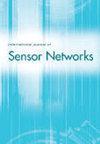一种利用无线传感器网络中多移动节点的数据采集路径规划新策略
IF 1.1
4区 计算机科学
Q4 COMPUTER SCIENCE, INFORMATION SYSTEMS
引用次数: 2
摘要
基于移动节点的数据采集技术中路径规划问题的流行研究只考虑了单个移动节点或位于通信中心的路径端点的简单情况。本文考虑了涉及上述两个因素的其他情况,并从这些情况中抽象出一个混合优化问题。该优化问题具有高维数和大搜索空间的特点。为了解决这个问题,我们做了以下修改。首先,基于k- splitour算法得到k个子路径;其次,设计了一种消除路径相交的方法来优化离散分量。最后,提出了一种混合萤火虫群优化算法(HGSO)来优化通信环上接入点的位置,以优化连续组件。给出了该算法的全局收敛性分析。仿真和与其他算法的比较验证了该策略能够有效地解决利用多移动节点的数据采集路径规划问题。本文章由计算机程序翻译,如有差异,请以英文原文为准。
A new path planning strategy of a data collection problem utilising multi-mobile nodes in wireless sensor networks
The prevalent research on the path planning problem in mobile node-based data collection techniques only considers the simple situation involving a single mobile node or path endpoint located at the centre of the communication. This paper considers additional situations involving both of the above two factors and abstracts from these scenarios to formulate a hybrid optimisation problem. This optimisation problem has the characteristics of high dimensionality and a large search space. To solve this problem, the following modifications were made. First, k sub-paths based on the k-SPLITOUR algorithm were obtained. Second, a method to eliminate path intersections was designed to optimise the discrete components. Finally, a hybrid glowworm swarm optimisation (HGSO) algorithm was proposed to optimise the positions of access points along the communication circle to optimise the continuous components. The global convergence analysis of the proposed HGSO algorithm is given. Simulations and comparisons with other algorithms verified that the proposed strategy can solve the path planning problem in data collection utilising multi-mobile nodes effectively.
求助全文
通过发布文献求助,成功后即可免费获取论文全文。
去求助
来源期刊

International Journal of Sensor Networks
COMPUTER SCIENCE, INFORMATION SYSTEMS-TELECOMMUNICATIONS
CiteScore
2.40
自引率
27.30%
发文量
86
期刊介绍:
IJSNet proposes and fosters discussion on and dissemination of issues related to research and applications of distributed and wireless/wired sensor and actuator networks. Sensor networks is an interdisciplinary field including many fields such as wireless networks and communications, protocols, distributed algorithms, signal processing, embedded systems, and information management.
Topics covered include:
-Energy efficiency, energy efficient protocols-
Applications-
Location techniques, routing, medium access control-
Coverage, connectivity, longevity, scheduling, synchronisation-
Network resource management, network protocols, lightweight protocols-
Fault tolerance/diagnostics-
Foundations-
Data storage, query processing, system architectures, operating systems-
In-network processing and aggregation-
Learning of models from data-
Mobility-
Performance analysis-
Sensor tasking and control-
Security, privacy, data integrity-
Modelling of systems/physical environments, simulation tools/environments.
 求助内容:
求助内容: 应助结果提醒方式:
应助结果提醒方式:


